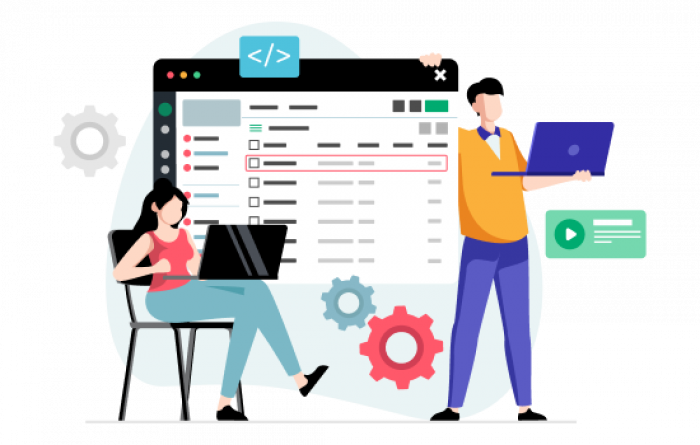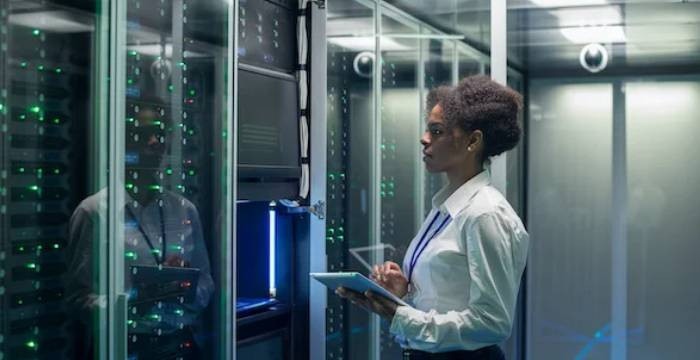Table of Content
The current technology era has been dominated by cutting-edge technologies such as cloud computing, microservices, and artificial intelligence (AI). Mainframes, the legacy computing systems that date back to the 1950s, might appear outdated or even obsolete to you. Yet, if you think the newer technologies have replaced mainframes, then the answer is NO!
While cloud platforms and other technologies steal the spotlight, mainframes continue to quietly and reliably be the bedrock of critical infrastructure in banking, insurance, government, and telecom industries, among others. The unmatched processing power, reliability, and scalability of mainframes has made them indispensable for these high-powered industries.
However, as organizations modernize their IT ecosystems, they also have to integrate these new technologies with the legacy systems like mainframes, and this is where the complex challenge arises. This integration often raises a question: How to ensure the reliability and quality of applications running on mainframes? Mainframe testing comes into play at this instant. This is where solutions like TestRigor help. Thus, mainframe testing remains relevant and crucial as long as there are mainframes, despite the rise of cloud-native applications and AI-driven development.
In this article, we will delve into the reasons why mainframe testing still matters today, the challenges it faces, and how to overcome these challenges to ensure the effectiveness of mainframe testing in today’s modern environment.
What Are Mainframes?
Mainframes are powerful computers. They handle large amounts of data quickly. Many big companies use them every day. It is designed for reliability and can run for years without interruption. They support thousands of users at the same time and process millions of transactions per second. These are often used in industries like banking, insurance, healthcare, and government, where secure and nonstop data processing is critical.
Why are Mainframes Relevant Even Today?

Mainframes are still used in industries that require secure, reliable, and continuous data processing. Sectors such as banking, healthcare, retail, and government depend on mainframes to handle large volumes of transactions and sensitive information without interruption.
- Banking: Handles daily transactions on a large scale.
- Healthcare: Manages patient records and insurance data.
- Retail: Processes sales and customer information.
- Government: Supports systems for taxes and social programs.
Testing is necessary to maintain the reliability and security of these systems
Why Mainframe Testing is Critical?
- Mainframes are essential for handling large, critical workloads securely and reliably.
- Even with cloud and AI, mainframes remain important in industries like finance and healthcare.
- AI integration adds new features, but testing is needed to ensure everything works correctly.
- Mainframe testing checks that both existing systems and new integrations function as expected.
Here's a more detailed explanation of why mainframe testing is important:
Core Reasons Mainframe Testing Is Important
- Mainframes support key industries by handling financial transactions, healthcare records, and government databases.
- They must be reliable and always available, so thorough testing is needed to prevent failures.
- Mainframes process sensitive data and must meet strict security and privacy rules. Regular testing checks for security and compliance.
- They can handle large workloads and scale as needed, but testing ensures performance stays high.
- Modern mainframes use AI and connect with new technologies. Testing is needed to make sure these new features work well.
- When moving or updating mainframe systems, testing helps avoid problems and ensures smooth transitions.
Mainframe testing is essential to keep these systems secure, reliable, and ready for modern business needs
Challenges in Mainframe Testing
Despite being relevant and crucial even in the cloud and AI era, there are still some challenges the mainframe testing faces. They are as follows:
- Skill Shortage: Despite its relevance, mainframe developers and testers are a diminishing group. The older generation is nearing retirement, and the younger generation has a significant skill gap as they tend to focus on more contemporary platforms. This results in high cost of maintenance, longer test cycles, and increased risk due to a lack of mainframe expertise.
- Limited Test Automation: Mainframe testing uses traditional testing tools, which may lack the flexibility and automation capabilities. Also, manual testing is still prevalent. This leads to slower feedback loops, human error, and poor scalability of testing processes.
- Isolated Development: Mainframes are often separated from cloud-native applications and exist in isolated environments. This isolation makes it hard to perform end-to-end testing and increases the risk of integration failures.
Modern Mainframe Testing Strategies
These challenges are marginally overcome using modern mainframe testing strategies. Some of the strategies are:
Shift-Left Testing
Using shift-left testing, the testing is moved earlier in the software development cycle. Mainframes traditionally relied on post-development testing, and hence, this strategy becomes critical for them. Shift-left techniques include:
- Early unit testing using virtualized mainframe environments.
- Mock services for simulating dependent systems.
- Early performance and load testing.
Test Automation
Automating test cases dramatically increases efficiency and coverage. Modern testing tools now offer capabilities such as scriptless automation, mainframe terminal emulator support, and API-level testing.
Popular tools offering mainframe testing include testRigor, IBM ZUnit, Compuware Topaz, and Micro Focus.
Service Virtualization
Using service virtualization, testers can simulate parts of the mainframe environment to test independently of system availability, reduce costs associated with accessing live environments, and speed up test execution.
Test Data Management
Since mainframe testing often requires working with large and sensitive datasets, advanced test data management solutions assist by masking sensitive data, generating synthetic data for testing, and ensuring data consistency across test environments.
AI and Mainframe Testing - A New Frontier
AI is already beginning to impact mainframe testing in several ways:
- Predictive Defect Detection: AI algorithms analyze historical bug data to predict high-risk areas in the application. The testers can then focus their efforts on these areas to find defects.
- Intelligent Test Automation: AI can help in test case generation based on user behavior, automatic maintenance of test scripts, and anomaly detection in log files.
- Enhanced Decision Making: AI can correlate test data across mainframe and cloud systems to detect patterns and suggest optimizations. This improves test effectiveness and speed.
Future of Mainframe Testing
The future of mainframe testing lies with integration and co-evolution with modern practices, and is not about isolation. Key trends include:
- Cloud-based mainframe testing: Simulating and testing mainframe systems using cloud infrastructure.
- Open-source testing tools: Community-driven, open-source solutions compatible with z/OS and z/Linux.
- Unified DevOps pipelines: Seamless integration of distributed and mainframe system testing.
The main requirement is to bridge the gap between old, legacy systems and new technologies through automation, agile practices, and AI.
Conclusion
By now, you know that mainframes are not going away anytime soon. As long as they continue to support mission-critical operations in highly critical sectors, they will remain. Hence, mainframe testing will also continue to stay. In fact, mainframe testing matters today more than ever. In the modern technological era, it ensures that legacy systems continue to operate flawlessly along with modern applications and environments. It also protects business continuity, enables agile transformation, and supports transition.
By adopting the right strategy, tools, and mindset, organizations can bring mainframe testing into the age of AI and cloud — and this is where it belongs.


